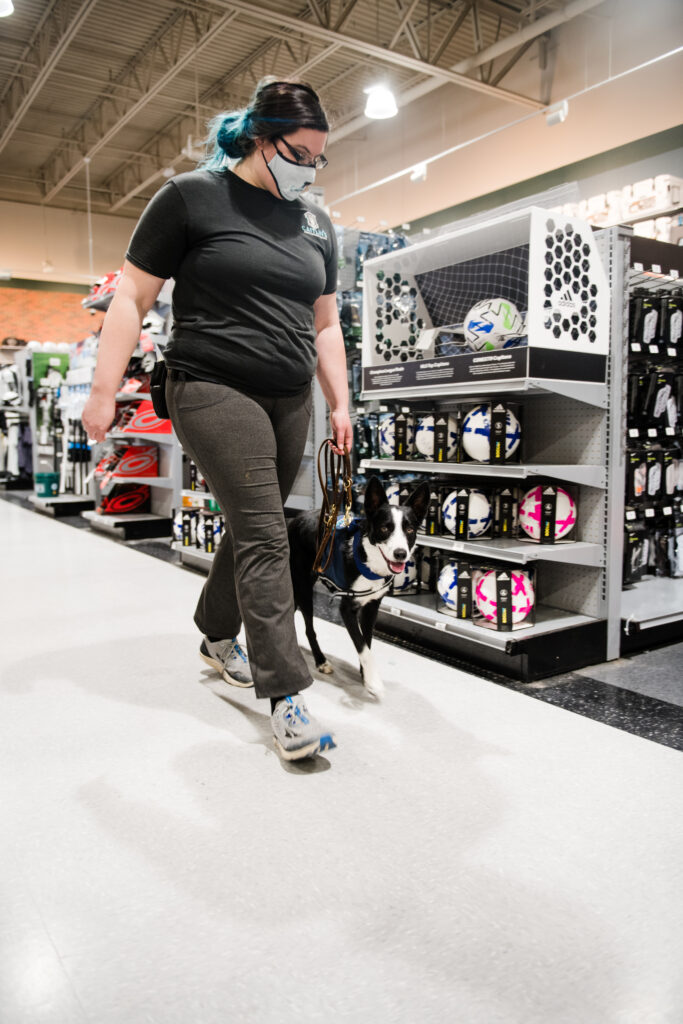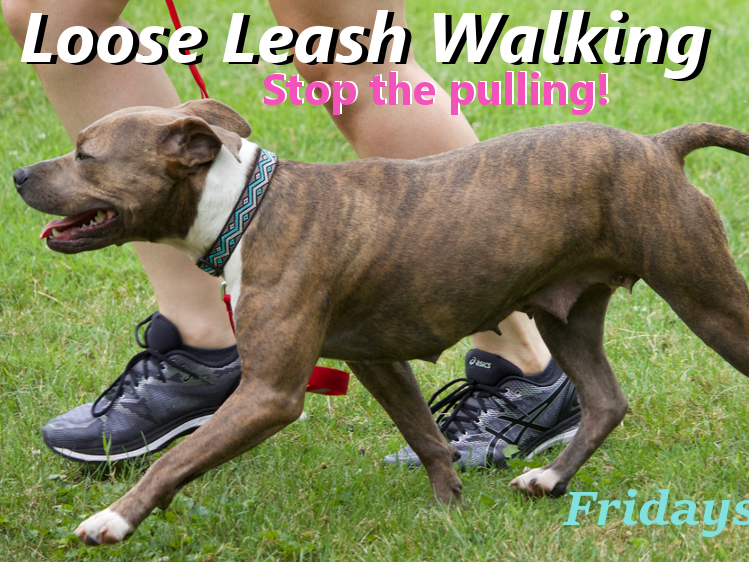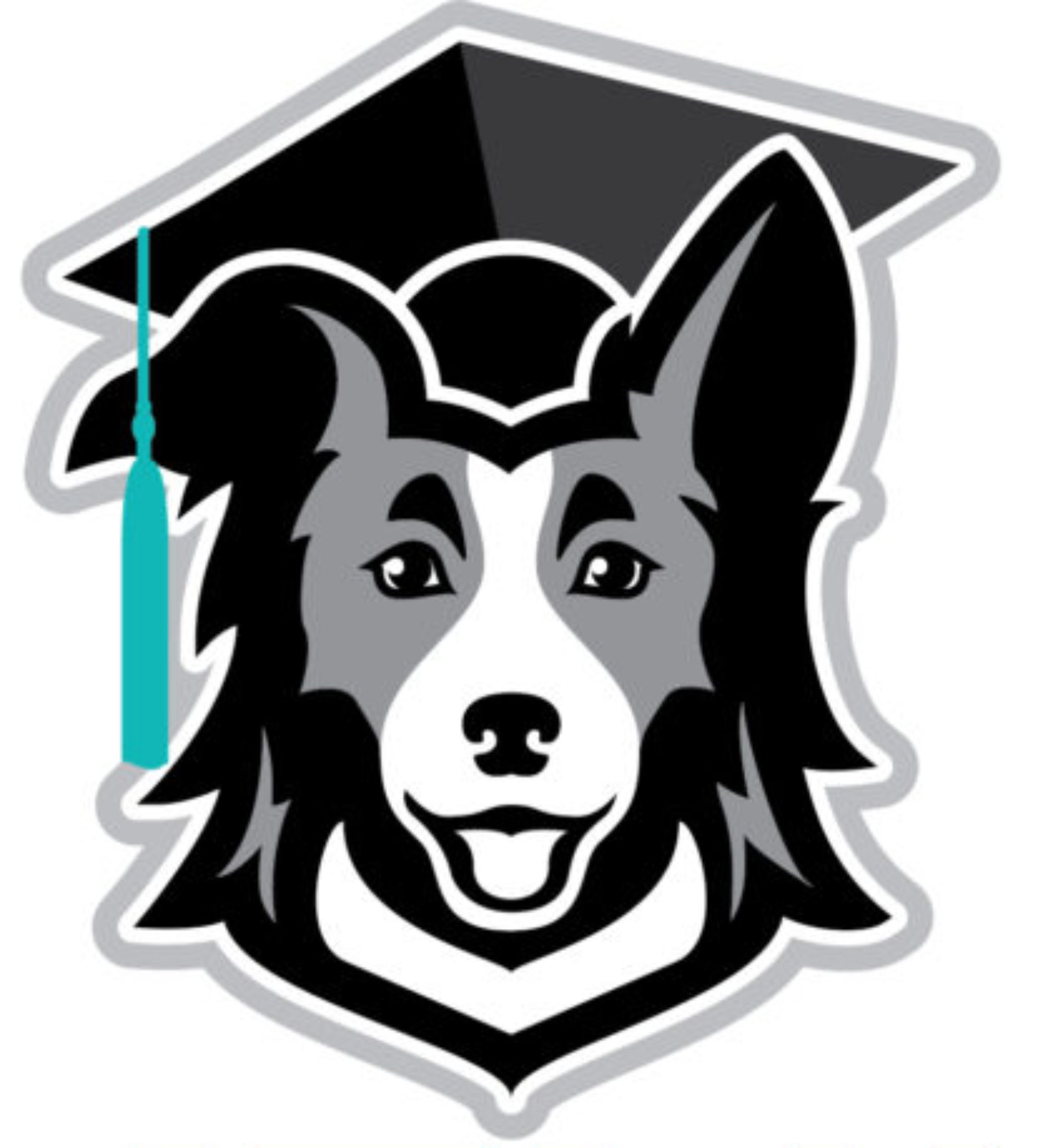
You want help with Leash Pulling. When I’m working with clients here in Allentown PA, one of the most common struggles they mention is leash pulling. Their dog is super excited to get out the front door for their daily walk — energy is high, focus is low, and frustration builds fast.
Most people just want to walk their dog at a pace they can manage, not get dragged down the sidewalk for the first 10 minutes. If that sounds like you and you’re searching for help with leash pulling in Allentown PA, know that you’re not alone — and that there are compassionate, effective ways to fix this.
Leash Pulling Training Starts Before You Step Outside
One of the biggest misconceptions I see is that training begins once you’re already out the door. But here’s the truth: if your dog is already overstimulated and bouncing off the walls when the leash comes out, they’re not in the right mindset to learn.
Trying to train in that moment is like asking a child to sit down and do math problems the second they arrive at a water park. We’d never expect that of a child — yet we often expect it from our dogs.
Instead, ask yourself this:
“Is my dog calm and focused enough to train with me right now?”
If the answer is “Oh boy, oh boy, let’s gooooo!” — then it’s a no.
Why Do Dogs Pull on the Leash?
Many dog trainers say the reason dogs pull is simple: “Dogs naturally walk faster than humans.” While that can be true in some cases, it’s not the whole story. What about the dogs who never struggled with leash pulling to begin with?
The truth is, there are several reasons why dogs pull on the leash — and speed is only one piece of the puzzle.
One of the biggest factors is your dog’s natural energy level. Just like people, dogs come in all types: low, medium, and high energy — with many falling somewhere in between. If you share your life with a working breed like a German Shorthaired Pointer, a field-bred Labrador, or a working-line Border Collie (not the show-line variety), chances are you have a dog with high physical and mental drive.
These dogs often prefer to move at a trot or even a canter during much of the day, making it more challenging for them to settle into a slow, human walking pace. On the other hand, dogs with lower energy levels tend to naturally walk at a speed more compatible with ours and are less likely to pull on walks.
Understanding your dog’s breed tendencies and energy needs is the first step to making walks more enjoyable. For many dogs, leash pulling isn’t a behavioral problem — it’s a mismatch in pace and unmet needs.
How Humans Accidentally Teach Leash Pulling
Leash pulling isn’t always the dog’s fault. In fact, it takes two to tango — and many owners unintentionally reinforce the very behavior they want to stop.
So how does that happen?
One big reason is sniffing. If your dog has a highly sensitive nose and loves to seek out scents on the ground — like my own German Koolie, Reiver — they may pull simply to reach the next interesting smell. And each time they succeed, the pulling behavior gets reinforced.
But don’t worry — I’m not about to tell you to stop your dog from sniffing! In fact, sniffing is one of the healthiest and most natural activities for dogs. It provides essential mental stimulation and can actually tire your dog out more effectively than physical exercise. I often recommend giving your dog at least 1–2 hours of sniff time each day.
For dogs who aren’t particularly scent-driven, pulling might be fueled by a love of movement itself. Breeds like Dalmatians, originally bred to run long distances alongside carriages and horses, may pull simply because forward motion feels good. For these dogs, movement is its own reward.
If you’re looking for help with leash pulling in Allentown PA, it’s important to understand the “why” behind your dog’s behavior. Only then can you tailor a leash training strategy that works for your unique pup.
➡️ Keep reading to learn how I help my own high-energy dog, Reiver, enjoy plenty of sniffing on walks — all while maintaining a calm and connected heel.
Stop Leash Pulling Indoors First
Before you ever clip on a leash, you can start loose leash walking training inside your home. I actually prefer starting this without a leash. This allows you to focus on your body positioning, reward timing, and building engagement — without the added layer of leash tension.
This is especially helpful if you’re doing in-home dog training in the Lehigh Valley, where outdoor distractions might be overwhelming early on.
Set Your Dog Up for Calm Success
Make sure you’re using a reward your dog values, but that doesn’t send them into a frenzy. The goal is calm and connected — not hyper and grabby. High-value treats are great, but clarity in your communication is even better.
Dogs that are super excited often fixate on the reward, not the lesson — and when that happens, new behaviors don’t stick well.

A Simple Technique for Fast-Paced Dogs
Here’s a strategy I love for high-drive dogs like Border Collies, field-bred Labradors, and Coonhounds — though it works well for just about any pup.
👉 Toss a treat behind you so your dog turns to sniff and retrieve it. As they loop back toward you, they naturally enter the correct heel position. Once they reach your side — toss another!
This turns the walk into a back-and-forth game that keeps your dog checking in, moving with you, and walking politely. It’s especially helpful if you’re working with a dog behaviorist in Allentown PA or looking for obedience training in the area.
Bonus: when your dog hits the end of the leash, simply turn and walk in the opposite direction. As they come back into position, you’ve got another great opportunity to reinforce the behavior.
A Note for Service Dog Handlers
This strategy involves treats on the ground, which may not be ideal if you’re raising a service dog who should avoid scavenging. For these teams, a different approach to loose leash training may be more appropriate.
Need Help With Leash Pulling in Allentown, PA?
If your dog pulls on the leash and you’re looking for personalized leash training in Allentown, Saucon Valley, Coopersburg, Bethlehem or the surrounding Lehigh Valley, I’d love to help. I offer in-home training sessions that are customized to fit your lifestyle — no cookie-cutter programs here.
We’ll work at your dog’s pace, build skills step-by-step, and help transform your walks from frustrating to fun.
➡️ Reach out today for professional dog training in Allentown PA or schedule a free consult to get started.
